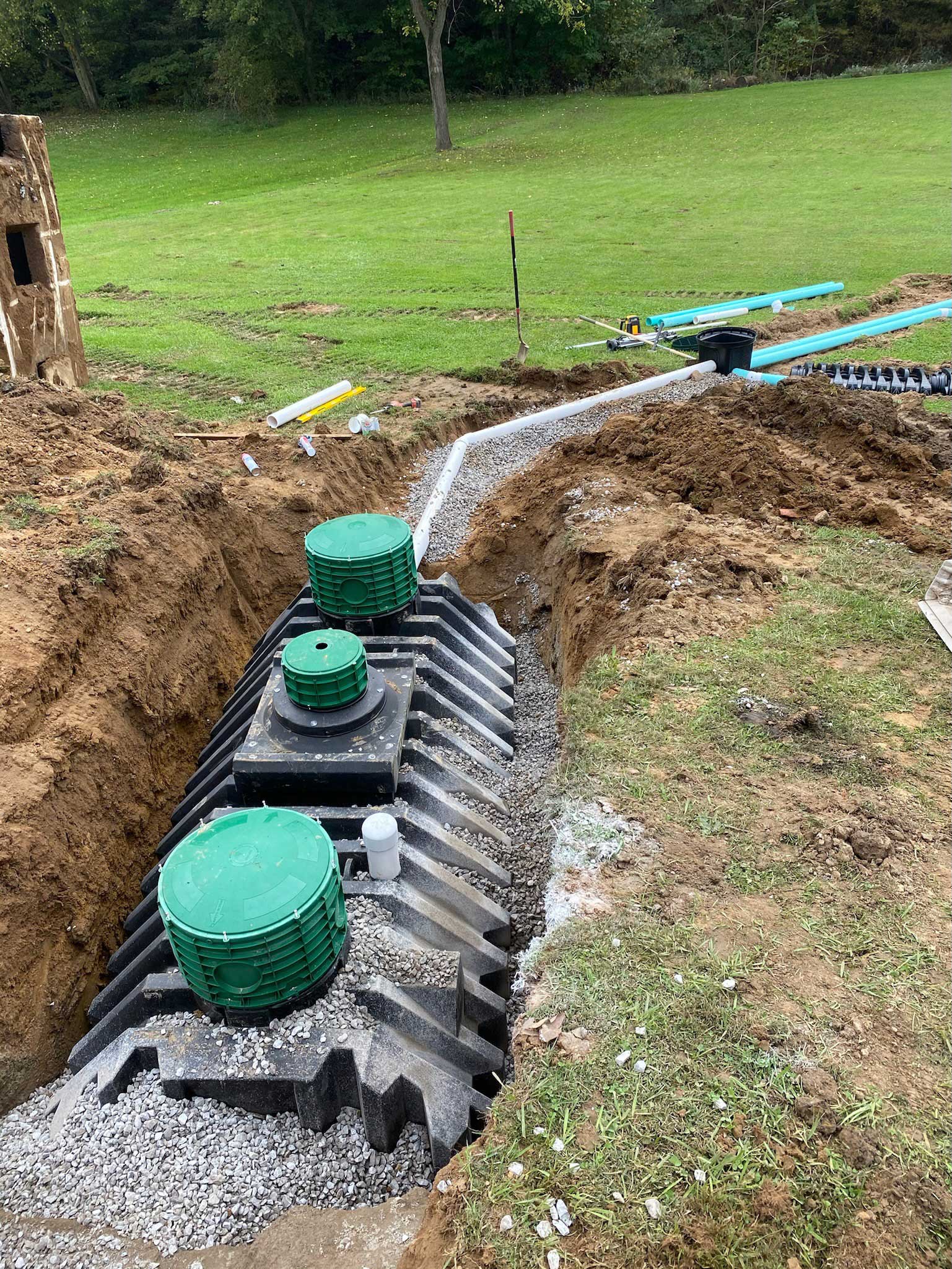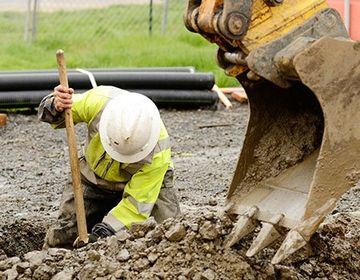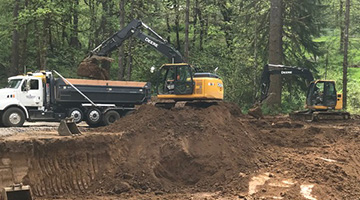Commercial Lancaster Trenching - Trenching Services for Services in Lancaster
Commercial Lancaster Trenching - Trenching Services for Services in Lancaster
Blog Article
Comprehensive Expedition: The Science Behind Superior Excavation Practices
From old hand devices to contemporary hydraulic excavators, the development of excavation techniques has actually been a testament to human resourcefulness and technological innovations. What really sets remarkable excavation methods apart is a deep understanding of geological concepts, coupled with the use of innovative tools and approaches.
Development of Excavation Methods
Throughout history, the development of excavation methods has actually played an important function in advancing construction practices and archaeological explorations. From the simple devices utilized by our forefathers to the advanced machinery utilized in modern-day times, the progression of excavation approaches has actually substantially transformed exactly how we approach various jobs.
In ancient times, hand-operated labor with fundamental devices such as wheelbarrows, shovels, and pickaxes was the primary approach of excavation. This labor-intensive procedure limited the depth and range of excavations, commonly resulting in sluggish development and limited access to particular sites. However, as people progressed, so did the methods and tools utilized for excavation.
The Industrial Transformation marked a turning factor in excavation experiment the introduction of steam-powered machinery. This innovation revolutionized the area, enabling faster and extra substantial excavations. In modern times, technology plays a crucial role in excavation, with innovations like GPS systems, drones, and 3D scanning boosting precision and efficiency in the field. The advancement of excavation strategies remains to shape the method we build, check out, and recognize the globe around us.
Role of Innovation in Excavation

The integration of advanced technology has fundamentally transformed the area of excavation, enhancing precision and efficiency to extraordinary levels. One of the crucial technological advancements that has actually considerably impacted excavation methods is the utilization of general practitioner systems. These systems allow for precise mapping of excavation websites, making it possible for operators to precisely locate below ground utilities and structures. Additionally, making use of telematics in excavation equipment has actually allowed real-time tracking of maker efficiency, resulting in aggressive upkeep and enhanced functional efficiency.
Moreover, the advent of 3D modeling and simulation software application has structured the preparation process for excavation projects. Operators and engineers can currently envision the whole excavation process prior to damaging ground, determining possible obstacles and optimizing operations. Along with this, the implementation of drones in excavation tasks has helped with airborne surveys, volumetric measurements, and website examinations with unparalleled speed and accuracy.
Geological Principles in Excavation
An understanding of geological concepts is vital for making certain the structural integrity and stability of excavation websites. Geological variables play a critical function in establishing the feasibility and safety and security of excavation jobs (septic ohio). One key geological principle to consider is the kind of dirt or rock present at the website. Different dirt types, such as crushed rock, clay, or sand, have differing levels of stability and need different excavation strategies. Cohesive dirts like clay might require extra assistance to protect against collapses, while sandy dirts might be susceptible to disintegration throughout excavation.
Moreover, the geological framework of the location, consisting of faults, fractures, and rock formations, need to be meticulously analyzed to recognize possible dangers and challenges. Digging deep into near fault lines or unstable rock formations can bring about instability and possible dangers. By carrying out thorough geological studies and analysis, excavators and engineers can establish approaches to mitigate risks and guarantee the effective completion of excavation tasks. Inevitably, a knockout post including geological principles right into excavation methods is crucial for accomplishing risk-free, effective, and lasting outcomes.

Most Recent Tools for Excavation
In the realm of excavation practices, modern advancements in tools have transformed the effectiveness and precision of excavation procedures. One of the current tools making waves in the sector is the use of drones equipped with advanced imaging technology. These drones can provide thorough airborne studies of excavation sites, supplying real-time information on topography and potential risks. This info help in far better planning and decision-making throughout the excavation process.
An additional cutting-edge tool obtaining popularity is the execution of 3D printing modern technology for creating custom excavation tools. This enables the production of specialized tools that are tailored to the particular needs of a task, raising effectiveness and minimizing downtime.
In addition, click now innovations in materials scientific research have actually caused the development of stronger and much more durable excavation devices. lancaster trenching. Tungsten carbide-tipped excavator add-ons, for instance, offer superior performance in difficult ground problems, enhancing productivity on-site
Scientific research's Influence on Excavation Practices

Furthermore, advancements in materials science have actually caused the production of more powerful, a lot more sturdy excavation tools and devices. For circumstances, the use of composite materials in diggers and shovels has enhanced their efficiency and durability, inevitably enhancing efficiency on excavation sites. Additionally, clinical research study on dirt auto mechanics and geotechnical design has provided beneficial understandings into soil behavior, permitting excavation professionals to make informed choices concerning excavation techniques basics and dirt stablizing methods. Generally, scientific research continues to drive innovation and improvement in excavation techniques, making excavation jobs more effective, cost-efficient, and sustainable.

Final Thought
In verdict, the advancement of excavation techniques has actually been significantly influenced by innovations in innovation and a deeper understanding of geological concepts. The most recent tools and tools used in excavation have actually boosted efficiency and accuracy in the area. The application of scientific knowledge has actually considerably boosted excavation methods, leading to extra effective and lasting methods for excavating different kinds of materials.
In the world of excavation techniques, contemporary technologies in tools have changed the efficiency and precision of excavation processes. By leveraging scientific concepts, the excavation industry has actually been able to considerably boost effectiveness, precision, and safety and security in excavation procedures. GPR permits excavation teams to non-invasively scan and map subsurface structures, utilities, and prospective threats, allowing them to plan excavation tasks with greater precision and lowered risk of accidents.
In addition, scientific research on dirt mechanics and geotechnical design has actually supplied useful insights right into soil habits, enabling excavation specialists to make educated decisions relating to excavation methods and soil stablizing strategies. In general, scientific research proceeds to drive development and renovation in excavation techniques, making excavation tasks much more reliable, cost-efficient, and lasting.
Report this page